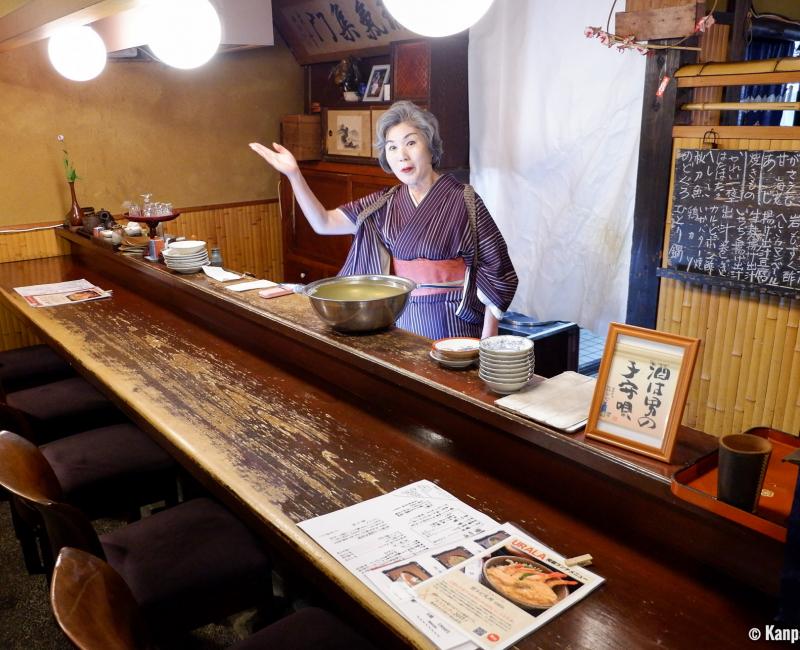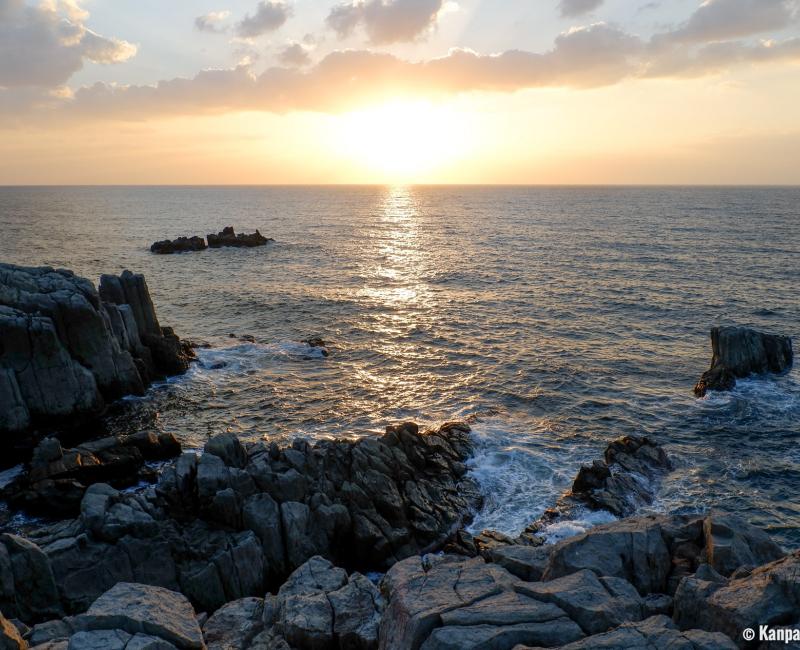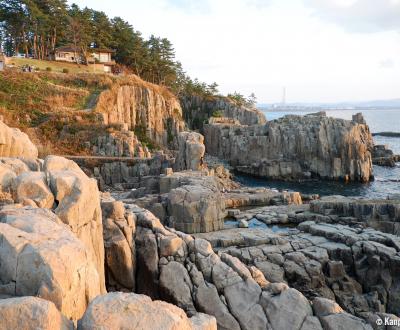Sakai
The Faubourg in Northern Fukui
Sakai is a city on the Sea of Japan, in the north of Fukui prefecture. The town is famous for its steep coastline and its well-preserved cultural and historical heritage. Its inhabitants are renowned for their hospitality which is delightful in all seasons.
Sakai lies in the northern periphery of Fukui City. Stretching from east to west, the city is divided in three large zones, each having specific features to explore.

The port’s historical area
Mikuni port town is in the west, near Kuzuryu River’s mouth. Once one of the home ports of cargo-ships sailing on the kitamaebune ("the northern-bound ships) shipping route running along the coasts of Japan for supply and trade, it was thriving during the Edo period (1603 – 1868). Nowadays, ancient traditional residences or stores are still visible in Mikuni. One of them is Former Kishina Family Home, a wonderful wooden house built in the typical kagura-date architectural style, unique in the area, in the beginning of Taisho era in 1913.
Walking in the district, other characteristic landmarks appear, such as the Former Morita Bank Headquarters, built in 1920 in a style of western inspiration by the wealthiest merchant of the city at the time. The other local curiosity is the several tall and narrow warehouses scattered throughout the streets: they are shelters for the famous yama floats of the Mikuni Matsuri. This festival is held every year from May 19 to 21. The seven-meter-high floats picture historical warriors of the ancient Echizen province, and parade on May 20 through the district to Mikuni shrine.

The amazing coastline
A little bit further north, the impressive Tojinbo cliffs face the Sea of Japan and provide an ideal spot for enjoying sunset. This natural landscape stretches its 20 meters high rocky formations on one kilometer and was formed thirteen million years ago. The almost perfect geometrical shape of the hundreds of fine basaltic columns is remarkable. Naturally, many legends emerged from this extraordinary place. One the locals enjoy tells of a Buddhist monk who was thrown down the cliffs by villagers he angered. His vengeful spirit is said to come back every year as violent winds and heavy rains ☔️ to haunt the population.
Consequently, it is recommended to not to walk along the steep rocks when the wind is too strong. At the end of the afternoon, however, Tojinbo’s surroundings attract tourists and inhabitants alike who enjoy the magical beauty of the scenery, when the light of the setting sun is reflected by the rocks’ asperities. The little streets that lead to the viewing spot, with restaurants and souvenir shops, is a pleasant complement to the excursion. Moreover, other beautiful walks are available on the coast, such as Ariso, Oshima Island or Echizen Matsushima.

An important feudal heritage
The exploration of Sakai’s touristic heritage continues inland, in the east of the city. Built in 1576 on the order of samurai commander Shibata Katsutoyo, Maruoka Castle 🏯 is one of the most important landmarks of the prefecture, as well as one of the twelve original castles of Japan, and its three-story keep is also the oldest in the country. The legend has it that its longevity was due to a dense fog hiding it from the view of the enemies. Its nickname Kasumiga-jo, the mist castle, derives from this story. Its architecture is also interesting: the roof is made of stone tiles and there is a hidden floor, invisible from the exterior. The site is also highly praised for its four hundred cherry trees 🌸 blooming in spring.
Lastly, Japanese alcohol (nihonshu) amateurs would not want to miss the tour of Kubota Shuzo, a sake 🍶 brewery opened in 1753, handed down generation to generation in the Kubota family and that is now managed by congenial Naoto Kubota. The brewery possesses its own rice fields from which a special rice, different from the cooking one, is harvested. Moreover, water, the other essential element for sake brewing, is sourced at two hundred meters deep, to find the purest water with the less minerals. At the brewery, visitors can learn more about sake making process and the secrets that make it different from the other Japanese sake.
With beautiful natural landscape and historical craftsmanship, Sakai is a logical continuation of sightseeing in Fukui. Additionally, the surroundings’ other must-sees are Awara Onsen ♨️ hot spring resort and the wonderful Eihei-ji temple.

